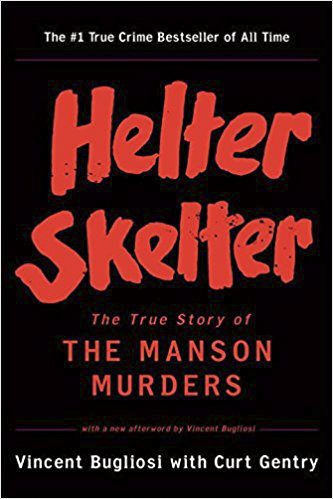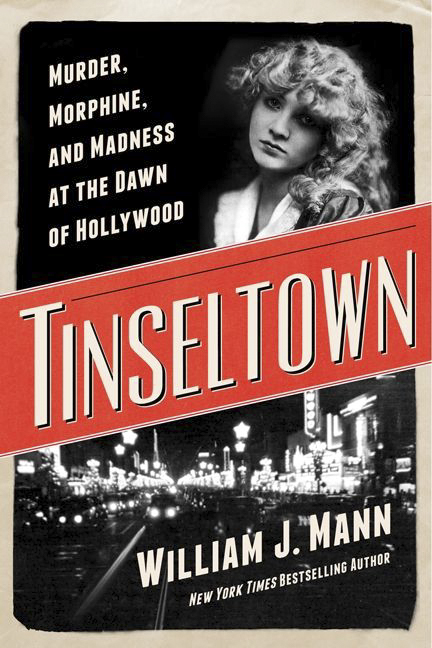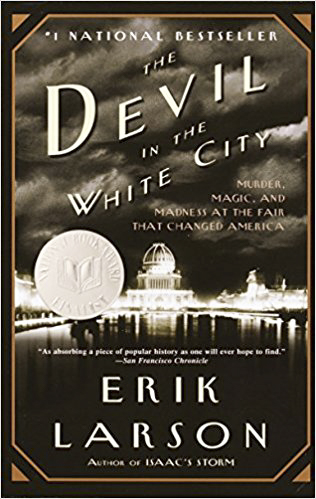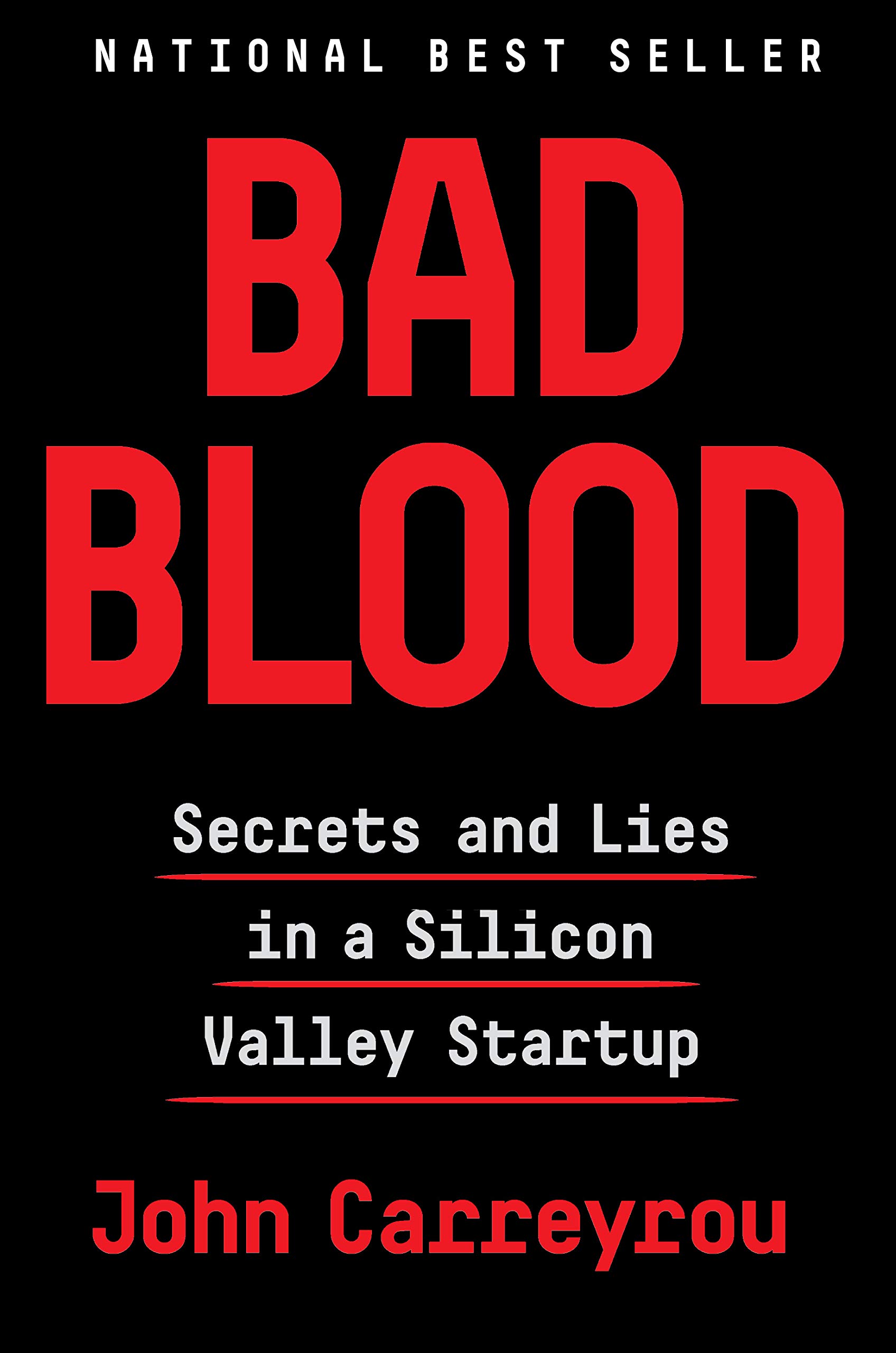Trying to cut down on Netflix? Searching for a birthday present? Looking to impress a literary-minded Tinder match? The Argus has your back. Welcome to our book recommendation column. Each column focuses on the standout works of a specific literary genre, and this week, we’re taking on true crime.
Despite—or perhaps because of—my sheltered suburban upbringing and deep-rooted fear of ever breaking a single rule, I’ve always been morbidly fascinated by some of the less scrupulous members of our society. From cult leaders to shady CEOs, here are some of my favorite books about just such shady characters.

c/o amazon.com
It seems fitting to kick off this list with some of the most lurid and famous murders in American history: the Tate-LaBianca murders, carried out in 1969 on the instructions of Charles Manson by members of his infamous commune. These events have been immortalized in countless books, documentaries, articles, and podcasts, but “Helter Skelter” (by Vincent Bugliosi and Curt Gentry) sticks out from the rest. “Helter Skelter” is actually the best-selling true crime book of all time, and for good reason; having served as prosecutor in the Tate-LaBianca trials, Bugliosi was perhaps uniquely qualified to write about the gruesome exploits of the Manson Family. With a lawyer’s keen eye for detail, Bugliosi exhaustively covers the murders, the ensuing investigation, and the trial. “Helter Skelter” avoids sensationalizing an already dramatic case, but Bugliosi is not afraid to criticize the actions of investigators, attorneys, and members of the press he feels hindered the case, and his inside perspective is one few writers have access to.

c/o harpercollins.com
Another Hollywood murder, albeit a much less well-known one, is the subject of “Tinseltown: Murder, Morphine, and Madness at the Dawn of Hollywood” (by William J. Mann). “Tinseltown” examines the case of William Desmond Taylor, one of the most successful movie directors of the ’20s, who was discovered dead in his apartment one morning in 1922. Like most successful members of the film industry, Taylor associated with plenty of colorful characters, and “Tinseltown’s” long list of memorable suspects includes A-list celebrity and former cocaine addict Mabel Normand (the last person to see Taylor alive), teenage actress Mary Miles Minter (whose passionate crush Taylor never seemed to be reciprocated), and Taylor’s ex-valet Edward Sands (who turned out to have a lengthy criminal history). Alongside Taylor’s life and death, Mann simultaneously describes a turning point in the movie industry. “Tinseltown” takes place in the final years before the institution of the Hays Code, a draconian set of guidelines preventing movies from showing sex, profanity, or any of a variety of other “immoral” content. The Hays Code was a response to the concerns of Americans who perceived the film industry as decadent, sleazy, and corrupt—a perception not helped by the violent murder of one of the most prominent members of Hollywood society. Taylor’s murder was never officially solved by the police, but Mann believes he has cracked the case, and by the end of the book you might well be convinced too.

c/o amazon.com
Much like “Tinseltown,” “The Devil in the White City: Murder, Magic, and Madness at the Fair That Changed America” (by Erik Larson) blends a storyline about a criminal with a larger historical narrative. The criminal in question will be familiar to anyone with even a passing interest in murderers; Larson’s book is about none other than Herman Webster Mudgett, better known by the alias H.H. Holmes. Widely considered one of America’s first true serial killers, Holmes is best known for the truly diabolical hotel he built and used to trap and kill his victims. Fitted with staircases to nowhere, doors that locked from the outside, pipes that pumped gas straight into bedrooms, and a cellar with a literal body-sized oven, Holmes’s hotel is straight out of a particularly splashy horror movie. Larson carefully tracks Holmes’s life as he dodges bill collectors, lies to insurance investigators, and seduces a frankly remarkable number of women (most of whom mysteriously disappear soon afterwards), and the resulting story is almost too bizarre and sinister to be real. If that weren’t narratively ambitious enough, “The Devil in the White City” also tells the story of the 1893 Chicago World’s Fair (whose thousands of visitors helped fill Holmes’ hotel). In the hands of a lesser writer, anecdotes about the logistical difficulties of building an enormous Ferris wheel might be a little dry, but Larson deftly conveys the vision and ambition necessary to pull off an event of such large scale, and it’s a testament to his skill that the architects he writes about are almost more interesting than the killer.

c/o amazon.com
For readers who don’t have the stomach to read about gruesome murders, there are always the more corporate—but no less sinister—exploits depicted in “Bad Blood: Secrets and Lies in a Silicon Valley Startup” (by John Carreyrou). “Bad Blood” details the rise and fall of former Silicon Valley golden child Elizabeth Holmes, the founder of the infamous health technology corporation Theranos (which finally ceased operations less than a month ago). Holmes originally drew attention for claiming she had developed technology that would allow labs to run blood tests on patients more accurately and efficiently while using far less of patients’ blood. This technology would have been revolutionary—had it actually worked. Carreyrou describes in devastating detail the repeated and increasingly ridiculous lengths Holmes went to deceive investors and commercial partners about her company’s success. From inventing contracts with nonexistent companies to equipping labs with fingerprint scanners to keep out questioning employees, Holmes—a woman who once drew comparisons to a biomedical Steve Jobs—comes across as vain, desperate, and ultimately, slightly pathetic.
Tara Joy can be reached at tjoy@wesleyan.edu.